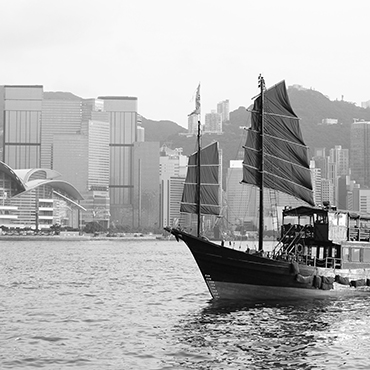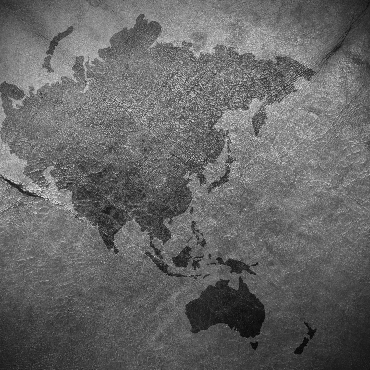The world is only beginning to assess the personal, economic, and political impacts of the coronavirus pandemic. Given the potential of COVID-19 to reshape the contours of international security, this issue of the Indo-Pacific Monitor focuses exclusively on the virus.
TOKYO SEEKS TO PULL PRODUCTION FROM CHINA...
On April 8th, General Secretary Xi Jinping warned his colleagues on China's Politburo Standing Committee to prepare for "a protracted battle... to cope with protracted external environment changes." Xi's admonition was partially tied to Prime Minister Shinzo Abe's announcement from the day before, when Tokyo earmarked $2.2 billion to incentivize Japanese businesses to move production facilities out of China. Countries like Japan and the United States are weighing the strategic risk of relying on Chinese production in key industries such rare earths and telecommunications, but the coronavirus pandemic has also underscored global dependence on Chinese-made personal protective equipment (PPE) for medical professionals, as well as pharmaceuticals. Abe’s direction to Japanese businesses was simple: move high-value production back to Japan, and relocate everything else to Southeast Asia. It remains to be seen whether Tokyo's financial incentives are sufficient to induce this change, as well as how the Chinese Communist Party (CCP) will respond, given that the step clashes with the its industrial policy of dominating strategic production. (Nikkei Asian Review, April 16, 2020)
...WHILE LATENT INVESTMENT PROJECTS IMPERIL CHINA'S GEOPOLITICAL GAMBIT
The February edition of this e-bulletin flagged the economic cost of the coronavirus on One Belt, One Road (OBOR) recipient countries. Two months on, signs of financial stress are beginning to emerge. OBOR, China's flagship foreign policy and foreign investment initiative, offers financing for infrastructure projects throughout the world. According to an estimate from the National Bureau of Economic Research, several developing nations owed $380 billion to China for OBOR projects even before the COVID-19 pandemic. Likewise, the Center for Global Development recently found that 22 countries were at significant or high risk of defaulting on OBOR loans.
The impact of the global pandemic will exacerbate these preexisting obligations for developing countries. Montenegro, for instance, is already feeling this pressure, as work on its planned 103-mile Bar-Boljare highway sits frozen. The road is funded with a $750 million OBOR loan and was meant to bolster Montenegro's tourism industry, but has instead increased the country's national debt by 80%. Eastern Europe represents a critical opportunity the People's Republic of China (PRC) to reorient the continent's economic alignment away from Washington — an important underlying goal of OBOR. (South China Morning Post, April 15, 2020)
BEIJING'S "HEALTH SILK ROAD" TAKES SHAPE
Ever since China proposed the creation of the Asia Infrastructure Investment Bank in 2009, PRC officials have pursued a dual track approach to participation in international institutions, remaining involved in Western bodies like the United Nations while simultaneously creating their own multilateral organs. China typically approaches these dual tracks in parallel fashion, but the coronavirus pandemic is exposing a previously under-appreciated feature of Beijing's foreign policy: using Western institutions to validate Chinese ones.
To wit, Xi Jinping is now using sales of PPE as a chance to promote China's "Health Silk Road," a subset of the country's larger OBOR initiative. Unlike UN bodies that operate on consensus, the Health Silk Road follows Beijing's hub-and-spoke diplomatic model, with China at the center. When China launched this initiative back in 2017, World Health Organization Director-General Tedros Adhanom Ghebreyesus traveled to Beijing to praise the program. The CCP has capitalized on its close relationship with Dr. Tedros throughout the pandemic, not only to blunt criticism of its response to COVID-19, but also to praise its medical assistance through the Health Silk Road. (Axios, April 15, 2020)
CHINA ESTABLISHES ADMINISTRATIVE DISTRICTS IN CONTESTED ISLAND CHAINS
Over the weekend, China used the global coronavirus pandemic as cover to bolster its territorial claims in the South China Sea. The prefecture-level government in Sansha, a city located on Woody Island in the Paracel archipelago, announced two administrative districts to govern the Paracel and Spratley islands — Xisha and Nansha, respectively. The following day, China’s Natural Resources Ministry and Civil Affairs Ministry released a joint statement naming 80 geological features throughout the South China Sea. Several countries, particularly Vietnam and the Philippines, continue to dispute the PRC's claim of sovereignty over these formations. (South China Morning Post, April 20, 2020)
A CONFIRMATION OF CORONAVIRUS IN THE HERMIT KINGDOM
Since the outset of the COVID-19 outbreak in China, the government of the Democratic People's Republic of Korea (DPRK) has insisted that it has no cases of the illness. However, the DPRK's porous border with China and its medieval healthcare system have led many, including General Robert Abrams, commander of United States Forces Korea, to posit that the so-called "Hermit Kingdom" is almost certainly grappling with the virus. Unsurprisingly, the DPRK's propaganda front in this regard is now beginning to crack. On April 17th, Radio Free Asia reported that authorities in the Korean Workers' Party had held mandatory briefings throughout the country in late March to warn the population about confirmed coronavirus cases. According to North Korean citizens who attended these meetings, party officials claimed that cases were limited to three locations — North Swanghae province (bordering China and Russia), Pyongyang, and South Hamgyong province (near the South Korean border). Given the geographic spread of these areas, there are likely to be many more cases throughout the rest of the country as well. (Radio Free Asia, April 17, 2020)
Want these sent to your inbox?
Subscribe

